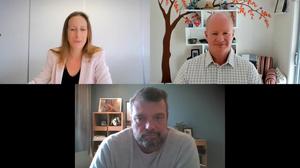Typical destination marketing programs have a tendency to fall back on the usual clichés of landmarks, icons and cultural attractions. But for Adelaide City Council, making the city a more attractive destination has meant reimaging what it means for a visitor or resident to interact with the location.
As a result, it has embarked on a data-driven ‘smart city’ strategy to position Adelaide as both a centre for technology-driven innovation and a great place to live.
To date, most smart city initiatives in Australia have been implemented to solve specific problems, such as providing community Wi-Fi, deploying light sensors to reduce power consumption for public lighting, or installing smart signage to improve traffic flow. But according to Adelaide City Council’s CIO, Peter Auhl, his city’s initiative is part of a broader destination marketing strategy that aims to use data to make Adelaide a more attractive place for residents and visitors alike.
“The intent for us is primarily around growth,” Auhl says. “South Australia is transitioning away from manufacturing into new areas, so the intent is to develop a strategy that focuses on growth outcomes. And we wanted to set ourselves apart and to be seen as a city that is doing things differently.”
Realising this vision has meant forging links between the council’s marketing and IT functions, particularly for informing citizens of new services.
“Marketing is heavily involved in how we pull this together,” Auhl says. “They are involved in how we engage through different digital channels and social media, to have people think differently about how they can interact with our city.”
The council has already installed traffic and lighting sensors on one street in its CBD as part of a pilot study into how the technology can be used to improve the experience of customers – in this case, the residents, workers and visitors to the City of Adelaide.
Auhl says the program kicked off with an extensive ideation process, using design thinking techniques to find and investigate those elements of city interaction that were frustrating customers, and then seeking appropriate technology to address those frustrations. Council has taken into account a number of possible customer personas such as residents, tourists or people with accessibility issues, when determining where to invest.
“We took a couple of months at the beginning to sit down and whiteboard those processes and ideate our way through that,” Auhl says. “We are looking at things like access and inclusion, as well as how do we interact with foreign tourists who don’t speak English as their native language.”
Importantly, Auhl says the Council will collate data gathered through its smart cities program together with existing data sources and make this available to interested parties, such as current and prospective business owners, to help them plan their businesses more effectively. This might include data such as pedestrian movements, to give business owners a better understanding of foot traffic through specific areas, and will see the Council investing in APIs and other technologies to make that data accessible in an easy-to-use form.
“That helps with their business planning and makes it simpler for them to take the risk in starting a business,” Auhl says. “It’s just thinking differently about how you use that information. Certainly with road traffic data, that has been around a long time.”
The strategy ties into other recent initiatives designed to promote Adelaide as a centre for innovation, such as recent driverless car trials and a new proposal to deploy 10-gigabit per second broadband connections across the city’s CBD.
The overall technology program has been planned out over ten years, and Auhl says the Council has developed indicators that will help it determine the contribution of specific investments to growth.
“We see an opportunity for us to think differently about how we can make people’s experience better,” he says. “By taking a citizen-centric approach we can change how people interact with the city, and create a vibrant city that has a positive snowball effect that generates more and more interest that ultimately leads to growth.”
Follow CMO on Twitter: @CMOAustralia, take part in the CMO conversation on LinkedIn: CMO ANZ, join us on Facebook: https://www.facebook.com/CMOAustralia, or check us out on Google+: google.com/+CmoAu












